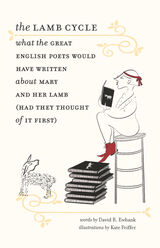

James Engell has prepared the first broad treatment of eighteenth- and early-nineteenth century British criticism to appear in a generation, presenting the views of scores of writers on a variety of questions, many of which remain live issues today.
While offering major reevaluations of Dryden, Hume, and Johnson, Engell demonstrates that eighteenth-century criticism cannot be represented by just a few major critics or by generalizations about Augustan taste, neoclassical rules, or “common sense.” He presents a complex and highly varied body of theoretical writing and practical application by dozens of critics including Rymer, Addison, Welsted, Ramsay, Hurd, Gerard, Newbery, Campbell, Blair, Beattie, Jeffrey, and Hazlitt. He also analyzes the continued relevance of their critical work, drawing connections with modern writers such as Eliot, Frye, Saussure, Barthes, Culler, Bakhtin, and Lévi-Strauss.
Engell concludes with a stimulating essay on the nature and function of the critical process itself. For students and scholars conversant with modern critical theory, Forming the Critical Mind will offer some surprising and interesting comparisons.


Published in the bicentennial year of Samuel Johnson’s death, Johnson and His Age includes contributions by some of the nation’s most eminent scholars of eighteenth-century literature. A section on Johnson’s life and thought presents fresh analyses of Johnson’s friendships with Mrs. Thrale and George Steevens, new information on Johnson’s relations with Smollett and Thomas Hollis, a speculative essay on “Johnson and the Meaning of Life,” and a provocative examination of “Johnson, Traveling Companion, in Fancy and Fact.”
Other essays reinterpret basic assumptions in Johnson’s criticism and examine “The Antinomy of Style” in Augustan poetics, Hume’s critique of criticism, and the broad Anglo-Scots inquiry on subjectivity in literature. A section on major figures of the age discusses Gray and the problems of literary transmissions, Hogarth’s book illustrations for friends, Gibbon’s oratorical “silences,” Blake’s concept of God, and Burke’s attempt to forestall Britain’s ruinous policy toward the American colonies. A section on the novel examines that genre from Richardson and Sterne to Austen.
Among the contributors are Bertrand H. Bronson, Jean H. Hagstrum, Patricia Meyer Spacks, Robert Haisband, Howard D. Weinbrot, Mary Hyde, Ralph W. Rader, Lawrence Lipking, Gwin J. Kolb, John H. Middendorf, W. B. Carruichan, and Max Byrd.

In The Lamb Cycle, David R. Ewbank achieves the unthinkable—he writes so convincingly in the style of the great English poets that one could be lulled into thinking that Shakespeare himself was inspired to muse upon the subject of “Mary Had a Little Lamb.” Ewbank captures not only the style of each of the poets he chooses, but also their preoccupations and subject matter. So D.H. Lawrence’s Mary longs for her lamb as any woman longing for her lover, whilst T.S. Eliot’s Mary is recollected by an old man looking back on his life. Alexander Pope writes an “An Essay on Lambs,” and Tennyson’s lotus eaters become “The Clover Eater.” Brilliantly written, sophisticated, and laugh-out-loud funny, these poems, enhanced by Kate Feiffer’s charming illustrations, will enchant anyone who has ever read an English poem.


Hugh Kenner, Helen Vendler, Harry Levin, Nathan A. Scott, Jr., Barbara Johnson, J. Hillis Miller, and seven other scholars, critics, and metacritics at the forefront of intellectual developments in their fields offer provocative statements on the teaching of literature and on their own practices as teachers. The authors, differing widely in their areas of interest and their approaches to literature, stress an inherent relation between the classroom and their published writings, integrating teaching strategies with critical or theoretical positions.
Teaching is seen as an essential part of their work at large rather than a separate discipline with other methods and aims. Ranging over such topics as Shakespeare, feminism, composition, the teaching of poetry, and interpretation, the essays are mostly personal: descriptive, not prescriptive. From the writers' experiences, both positive and negative, much can be learned about ways of approaching a work of literature, of reading and understanding a text, as well as ways of helping students to do the same.
READERS
Browse our collection.
PUBLISHERS
See BiblioVault's publisher services.
STUDENT SERVICES
Files for college accessibility offices.
UChicago Accessibility Resources
home | accessibility | search | about | contact us
BiblioVault ® 2001 - 2024
The University of Chicago Press









